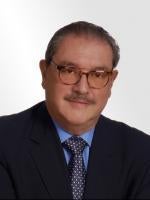The Occupational Safety and Health Administration will hold an informal hearing to gather testimony on a comprehensive agency proposal on worker exposure to beryllium. The proposal would cut the permissible exposure limit (PEL) tenfold and impose employer mandates. The current limit, 2.0 µg/m3, has been in place since 1971and the new limit would cut the PEL to 0.2 micrograms per cubic meter of air (µg/m3).
Other provisions in the proposal include mandatory exposure monitoring, limiting access to areas with exposure above the PEL, exposure-limiting control measures, medical examinations and medical removal, worker training, and recordkeeping.
As proposed, the rule applies to about 35,000 general industry workers, the majority of whom work in foundries and smelting operations, machining, beryllium oxide ceramics and composites manufacturing, and dental lab work. Not covered are general industry workers in coal-burning plants and aluminum production, as well as abrasive blasters and support personnel in the construction and shipyard industries, according to OSHA. The agency seeks comment on whether to cover these workers under the final rule.
OSHA states that workers who inhale excessive beryllium particles are at risk of developing chronic beryllium disease (CBD), a debilitating, incurable, and sometimes fatal illness, according to the agency. Prior to developing CBD, workers must become sensitized to the metal. Sensitization occurs when the body’s immune system reacts to beryllium exposure through inhalation or skin contact. Airborne beryllium exposure also puts workers at risk for developing lung cancer, OSHA said.
The agency has predicted the rule, when fully implemented, would prevent nearly 100 fatalities annually from CBD and lung cancer. OSHA estimated that there would be an average of $575.8 million in annual benefits over the next 60 years, a figure offset by an annual cost of $37.6 million, according to OSHA estimates.
In a Federal Register notice released on December 30, OSHA said the hearing would be held at its headquarters in Washington, D.C. on February 29, 2016, and, if necessary, would extend into the next day and beyond. Individuals who intend to present testimony or question witnesses must submit the full text of their testimony and all documentary evidence by January 29.



 />i
/>i

